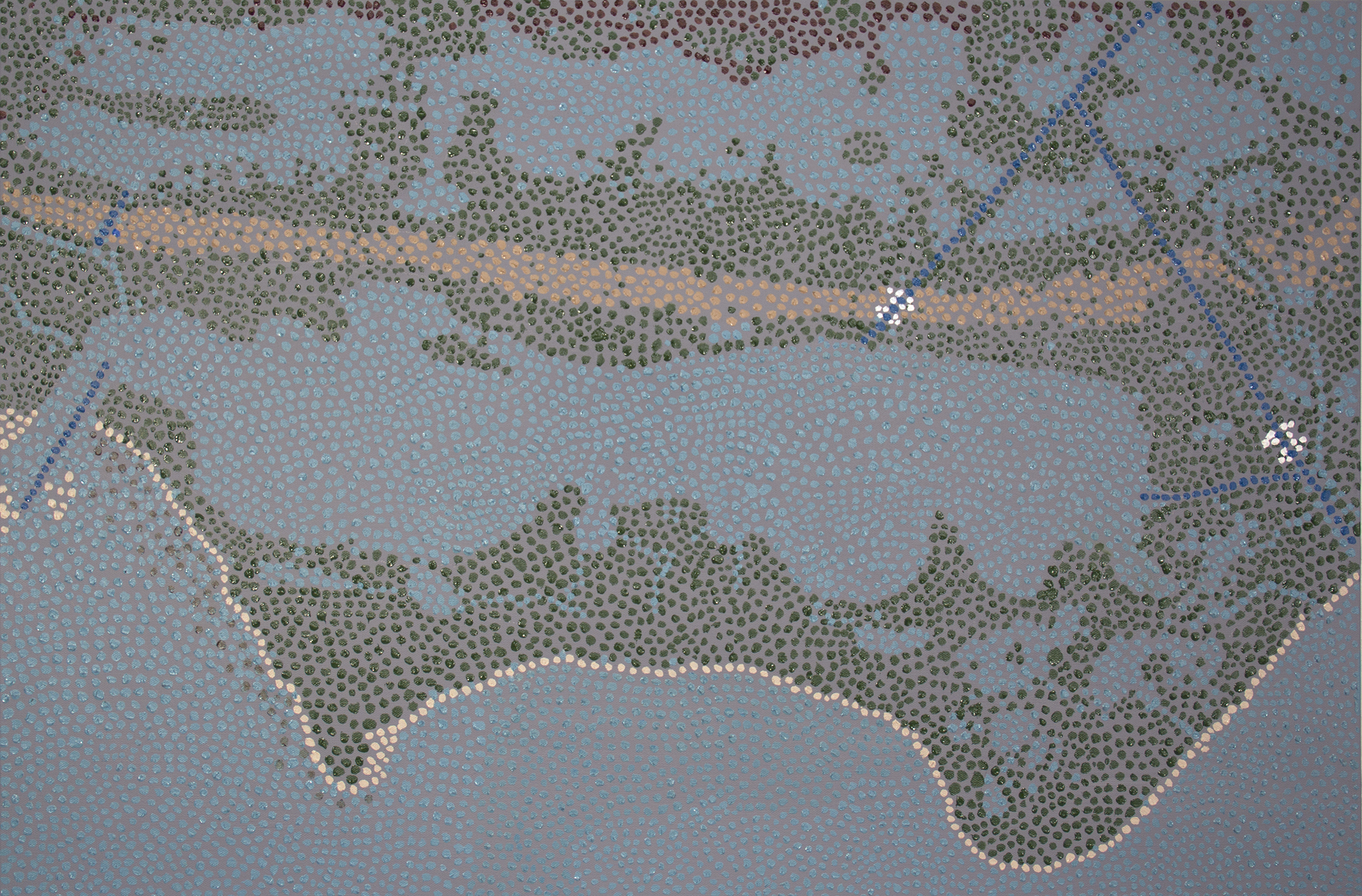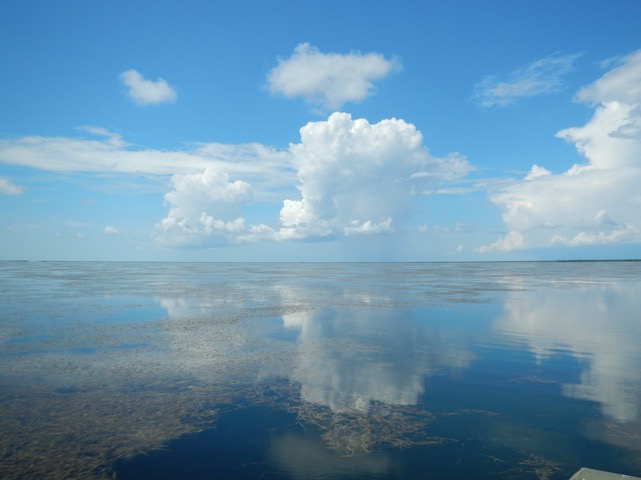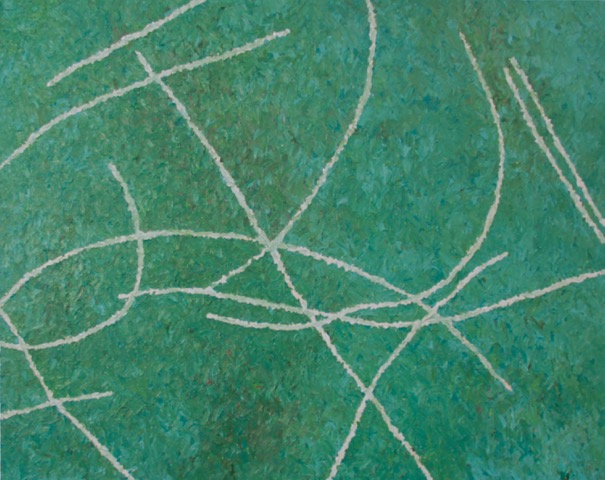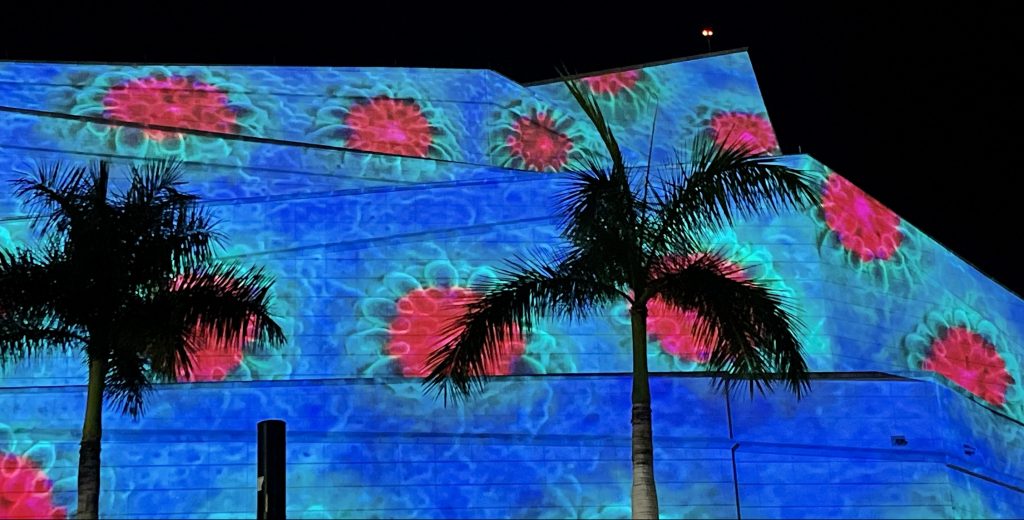
‘Wild Culture’: Discover the work of Artists in Residence in Everglades fellows
Above: “Cape Sable,” 2015, by Jason Hedges. Oil on canvas. 24” x 36.” Photos courtesy of Jason Hedges.
Jason Hedges is a former fellow with Artists in Residence in Everglades, a Knight Arts grantee.
Since my residency this past October, I have spent as many days back there as possible, and double that time reflecting on the state of the the Florida Everglades. I grew up with the privilege of spending time out in Florida Bay. Awed by its life and beauty, I was unaware of how the water I was floating on or gazing over actually got there, or that it even came from anywhere. I have since filled in the geographic and ecologic gaps between Lake Okeechobee and the Florida Keys through countless hours of exploration and research.

I spent months looking forward to my month in the Everglades, planning on immersing myself in the lakes, channels, bays and bights that I knew well. I had heard mentions of water quality issues, but I was not prepared for the large scale seagrass die-off that I encountered. I found myself in lifeless bights with piles of dead grass covering the sea floor, and the smell of it starting to rot. Getting to and from these areas, I ran through miles of dead grass floating on the surface of the bay. I contacted a park scientist in the hope of finding life outside the death and to see about getting into some more remote, restricted areas I had heard about but never been to. These forbidden access areas were rumored to be magical places, undisturbed by humans for decades. The disappointment I felt upon hearing that those areas were equally lifeless right now can probably only compare to the disappointment a child feels when they find out that Santa Claus isn’t real. I was given some hope, however, and told that areas of the park are still thriving. Florida Bay, October 2015. I learned that the Cape Sable area, an area I frequent and thought I knew well, has actually been completely transformed from its original state. A few men and some machines in the early 1900s are to be credited (or blamed) for a simple series of dredged out ditches designed to drain the land and disrupt the water flow. The water did what it wanted to, and it did so relentlessly. Some of the ditches were originally only 15 feet across, and today tidal erosion has caused them to expand to 400 feet. Throughout the past few years, a couple of these ditches have been plugged, and plans are currently underway to close up the remaining ones in an attempt to bring back the natural flow of water in the area. “Nixon Beach,” 2014, by Jason Hedges. Oil on canvas. 24” x 30.” Throughout South Florida, we can see evidence of our attempts to control the environment, with roads, canals, dams and even invasive species. The impact of these attempts are not all visible or intentional. From the mismanagement of water discharge from Lake Okeechobee, to the miles of sugar cane fields south of the lake, and the family cruising the bay in their power boat, we often leave a mark. A single-engine power boat traveling 40 miles an hour can destroy 3,500 square feet of sea grass per minute.

Artist rendering of “Scarred Flat” 2016.
For AIRIE’s Sundays in the Park, I will be creating a new work titled “Scarred Flat,” a 1:1 scale recreation of a damaged shallow sea grass flat located southeast of the Flamingo ranger station in Everglades National Park. The project will explore the propeller scars that run through these critical habitats. These unconsciously created linear compositions can only be completely viewed from high altitudes, much like the Nazca lines of southern Peru. These lines, however, are unintentional. This season, AIRIE artists began rewilding Miami through AIRIE’s Wild Billboards project, initiated with support from our Knight Arts Challenge grant, just in time for the National Park Service’s centennial year. Mini billboards were reproduced for our seasonal events under the concept of learning about our “Wild Culture.” On Sunday, Feb. 28 at noon, AIRIE invites the public to learn about “Wild Culture,” a site-specific program designed to connect the performances of AIRIE fellows in the Everglades with the public during the centennial anniversary of the national parks.
Recent Content
-
Artsarticle ·
-
Artsarticle ·
-
Artsarticle ·

